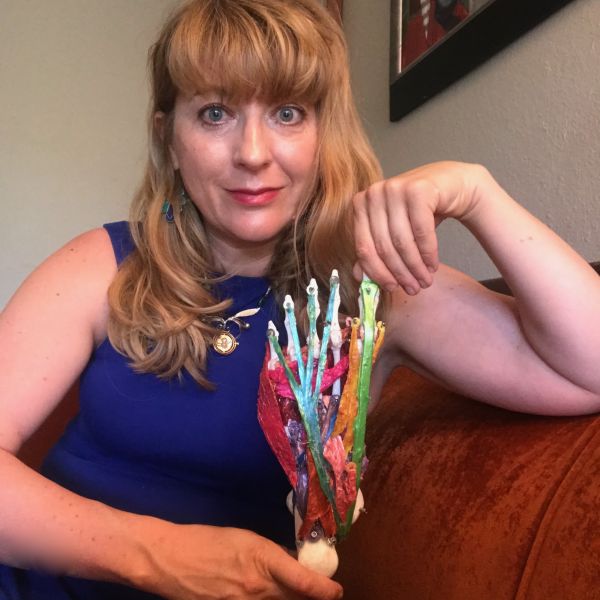
Kate Serralde is building a 3D printing medical program for one of the largest universities in the state of Texas, Texas Tech University Health Sciences Center (TTHHSC).
They currently have 11 3D printers and offer a 3D printing course for the TTUHSC School of Medicine that focuses on the relationship between aesthetics and medical imaging as a way to generate ideas for new technology. Kate’s work focuses on the process of segmentation which extracts volumetric data from medical imaging.
Nora Touré: Kate, could you let us know about your background and your journey to Additive Manufacturing?
Kate Serralde: I get the oddest looks when I tell people about my background. I can see them struggling to draw a connection between what I do now and my education in philosophy, art history, and sculpture. On the surface, it is puzzling. It is hard to see how my background equipped me to take on the technical and managerial roles required for Additive Manufacturing. Of course, there is more to the story, there always is — I didn’t come to 3D-printing because I wanted to; I came to 3D printing because I had to.
It seemed like a good opportunity when I accepted a position to oversee the daily operations of a learning resource center within a university medical library. With a grant funded 3D printer collecting dust, they needed someone to run it and I needed an out. Eleven years had passed when I returned to my alma mater. And I returned not triumphant but defeated. My marriage was failing, my vision was failing and this return was my attempt to fix things. I have thought a great deal about why I returned to Texas, Lubbock specifically. My conclusion? What do you do when you get lost? You retrace the path that brought you to that particular place to begin with.
The place that I found myself? Standing in front of a large black 3D printer about to press print. I suppose you are still wondering what prepared me to press print? What is among one of my many artistic dabblings was the experience of film editing. In college, I made a series of art films to bore people with. I spent hours in the university library’s digital media center learning how to use Final Cut Pro. In addition to that, as a research manager at the University of Denver, I oversaw a longitudinal study that had a film archive. I implemented the study’s transition from analog into digital media. My ability to build things along with the technical similarities between film conversion and 3D modeling seemed to be the right recipe for walking into 3D-printing cold.
Another part of that recipe was the fact that two weeks after I started my new position, I fell ill and was hospitalized. When I returned to work, I remember thinking: ‘I better figure out how to use this, if I want to keep my job.’ So, I pressed print. I started printing things. Even so, I knew that chess pieces and vape-stands were not going to be enough, I needed to make this printer relevant to the medical community. I needed to define the point of it all. I found an open-source software, 3D Slicer, that extracts volumetric data from medical imaging through a process called segmentation.
From there it went. As I asked the question of what’s the point of a 3D-printed model within medicine, I began to find a new viewpoint for my life. As I taught myself how to use the segmentation software and the process of converting medical imaging data into 3D printable models, I filed for divorce. When I was learning how to interpret and convert CT and MRI scans, I underwent a series of eye injections to preserve my vision. While I began writing a course on Additive Manufacturing and medical imaging, I went back to school to pursue a graduate degree in philosophy. In my first two years, I went from one to eleven printers, updated what was a 1990s computer lab. In addition, I began teaching, after my 3D-printing course was approved and added to the 4th year medical curriculum. Currently, I have started presenting my work at medical education conferences: World Ultrasound Conference, South West Medical Librarians Association, John Hopkins and the National Medical Library Association.
Read the rest at Women in 3D Printing
